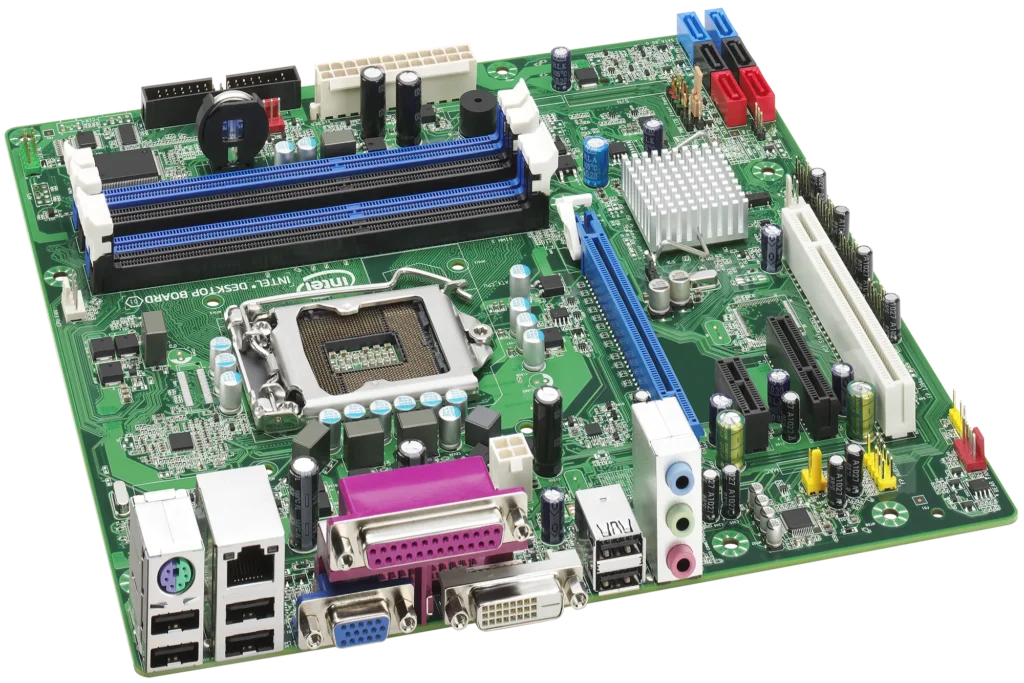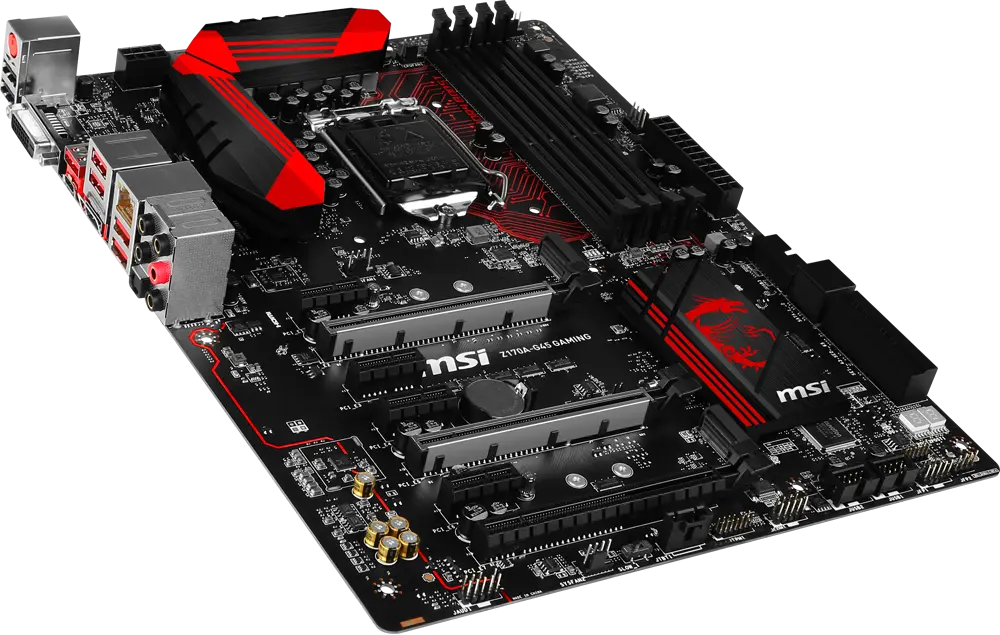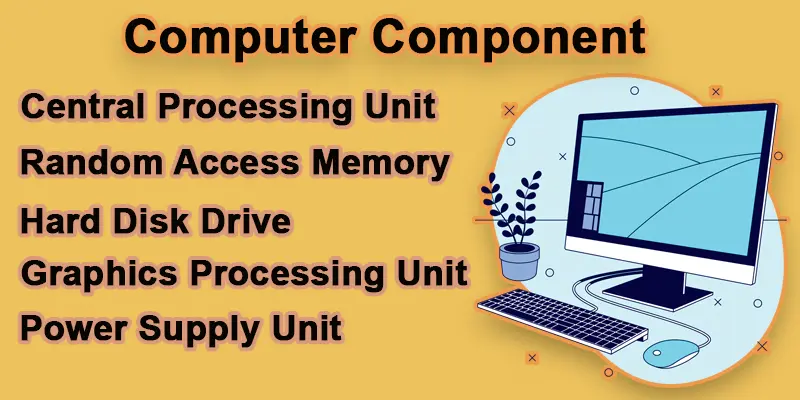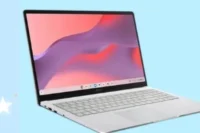What is the Motherboard of a Computer? Its Types, Components, or Parts
Published: 12 Feb 2024
Motherboard of Computer
The motherboard is a very important part of the computer because it connects and allows communication between all the other components. Think of it as the nervous system of your computer. Without it, nothing would work. It is sometimes called the mainboard or system board. Each part of the motherboard has a special job. We’ll explain everything in a simple and friendly way, from the RAM slots that help with memory to the CPU socket that connects the computer’s brain. You’ll gain a new understanding of how your computer works.
Types of Computer Motherboard
Let’s explore the different types of motherboards. There are various types, including ATX, Micro-ATX, Mini-ITX, BTX, and Pico BYX motherboards.

Standard ATX Motherboard
The standard-size motherboard commonly used in desktop computers matches Intel’s strong ATX (Advanced Technology Extend) form factor specifications. ATX motherboards are widely used in desktop computers and offer a standardized layout and size, making them compatible with most ATX-compatible computer trials.
- Factor: The basic ATX form factor is 12 by 9.6 inches (305 x 244 mm), while smaller cases are available with microATX and mini-ITX variants.
- Expansion Slots: It provides multiple expansion slots for network, sound, and graphics cards, among other components. PCI Express x16 slots are used for graphics cards, whereas PCIe x1 slots are used for other peripherals.
- Power Supply Connector: ATX motherboards feature a 24-pin power connector, which provides power to the motherboard from the power supply unit (PSU).
Micro ATX Motherboard
It is a motherboard with a lower factor that is more portable than ATX but still has some functionality and expansion slots for desktop PCs. It incorporates many of the capabilities sought after in knowledgeable ATX motherboards. A few features of Micro ATX motherboards are as follows:
- Form Factor: Smaller than conventional ATX boards are micro ATX motherboards.
- Slots for Expansion: Although Micro ATX motherboards are smaller than regular ATX boards, they have multiple expansion slots.
- Power Supply Connector: Like knowledge ATX motherboards, Micro ATX boards feature a 24-pin force connector, which connects to the force supply unit (PSU) to supply power to the motherboard.
Mini ITX Motherboard
The smallest form-factor motherboard is commonly used in small-factor PCs, offering fewer expansion slots and features but saving space.
- RAM Slots: Mini ITX motherboards typically introduce two RAM slots for installing memory modules. This allows limited memory compared to larger form factor motherboards but is sufficient for often mainstream computing works.
- I/O Ports: Despite their small size, Mini ITX motherboards support a variety of input/output ports, including USB, Ethernet, audio jacks, HDMI, and DisplayPort. The number and style of ports may vary depending on the specific motherboard model.

BTX Motherboard
A legacy from-factor motherboard design intended to improve airflow and cooling in PCs but not widely used, BTX motherboards were designed to address certain limitations of the ATX form factor, particularly in terms of thermal tactics and component placement.
- Form Factor: BTX motherboards have a different physical layout than ATX motherboards. The BTX form factor is designed to improve airflow and thermal management within the computer by rearranging the positions of components.
- Layout: In a BTX motherboard, the CPU socket is typically located closer to the front of the case, while the expansion slots are positioned towards the rear. This allows for other efficient airflow over the CPU and expansion cards.
- Cooling Solutions: BTX motherboards must include conditions for improved cooling solutions, such as larger heatsinks and heat pipes, to better finish CPU-generated heat and more points. Additionally, BTX cases may feature dedicated airflow channels to direct cool air over hot components.
Pico BTX Motherboard
A smaller version of the BTX design that never gained overall adoption in the market.
- Slots for Expansion: Although Micro ATX motherboards are smaller than regular ATX boards, they have multiple expansion slots.
- Power Supply Compatibility: Pico BTX motherboards are designed to work with specialized power supplies compatible with the smaller form factor. These power supplies are typically smaller and have lower wattage than standard ATX.
- Compatibility: Pico BTX motherboards and cases are less common than standard ATX or BTX components. They are often used in specialized applications where space is at a premium, such as industrial computers, embedded systems, or small form factor desktops.
Computer Motherboard Components
The motherboard is one of a computer’s most crucial components. It acts as the main circuit board, allowing various computer parts to communicate. Understanding the motherboard and its components is essential for building or upgrading a computer. Let’s dive into the primary components of a motherboard and what each part does.
CPU Socket
A CPU socket is where the processor is installed. The CPU, often called the computer’s brain, performs all the calculations and tasks that make your computer run. Different motherboards support different types of CPUs, so the CPU socket must match the CPU you plan to use.
RAM Slots
RAM (Random Access Memory) slots, also known as memory slots, are where you insert the RAM modules. RAM is your computer’s short-term memory, temporarily storing data for quick access. More RAM allows computers to handle more tasks together.
Chipset
The chipset is a crucial motherboard that controls communication between the CPU, RAM, storage devices, and other peripherals. It acts like a traffic controller, ensuring data moves smoothly between components.
Power Connectors
Power connectors provide electricity to the motherboard and its components. The main power connector connects to the power supply unit (PSU), which converts electricity from your wall outlet into a form your computer can use.
Expansion Slots
Expansion slots allow you to add extra components to a computer, such as graphics cards, sound cards, and network cards.
Storage Devices
Storage devices and SSDs to the motherboard allow your computer to read and write data to and from these storage devices.
BIOS/UEFI Chip
The BIOS (Basic Input/Output System) or UEFI (Unified Extensible Firmware Interface) chip stores the firmware, the software that starts your computer and checks that all components are working correctly. It also allows you to configure hardware settings.
I/O Ports
I/O (Input/Output) ports are located on the back of the motherboard and allow you to connect external devices to your computer.
Heatsinks and Cooling Solutions
Heatsinks and cooling solutions help dissipate heat from the motherboard and its components. Keeping your motherboard cool is crucial for maintaining performance and longevity.
Parts of Motherboard and How They Work
A motherboard’s primary parts are the CPU socket, RAM slots, expansion slots, chipset, BIOS, connections, and force connectors. Every part is important to the motherboard’s operation and the computer’s overall performance.
A motherboard’s duties include:
- Providing force to the components.
- Permitting communication between them.
- Managing data flow from the CPU to the memory.
- Facilitating connectivity with external devices.
It is essentially the spinal cord of a computer system, allowing all parts to function flawlessly.

Conclusion Motherboard of Computer
The motherboard is like the heart of a computer, connecting and coordinating all its components to work together seamlessly. Like a puzzle, it homes vital parts such as CPU sockets, RAM slots, and expansion slots, ensuring every piece finds its place. The CPU socket acts as the mind, processing instructions and executing jobs, while the RAM slots supply short-term memory for quick access to data. Together, these components form a cohesive unit, powering the computer’s functionality and enabling users to complete work efficiently.
FAQS (Frequently Asked Questions)
What constitutes a motherboard’s core parts?
The three primary motherboard types—ATX, Micro-ATX, and Mini-ITX—vary in features and volume.
- The normal size of the ATX motherboard leaves plenty of room for extra parts and accessories.
- Mini-ITX is also smaller and more suited for compact form-factor computers.
- The Micro-ATX is larger and better suited for sturdy designs. Different motherboard types meet different needs and preferences.
What are the types of motherboards?
Various motherboard types are available, including ATX, Micro-ATX, Mini-ITX, BTX, Pico, and BYX motherboards. Some types have additional slots and connectors for components, but their sizes and functions vary. These kinds of motherboards were quite popular in the 1980s.
What other name would one give a motherboard?
Another term for a motherboard is a mainboard or system board. It connects all the vital parts of a computer, acting as if it were equal to the spinal cord. A computer motherboard’s primary parts are the CPU socket and memory.
What is the motherboard’s primary purpose?
The motherboard’s primary job is communicating and distributing force between a computer’s components. It facilitates smooth system operation, regulates data flow, and allows communication between the CPU, memory, and other devices.

- Be Respectful
- Stay Relevant
- Stay Positive
- True Feedback
- Encourage Discussion
- Avoid Spamming
- No Fake News
- Don't Copy-Paste
- No Personal Attacks

- Be Respectful
- Stay Relevant
- Stay Positive
- True Feedback
- Encourage Discussion
- Avoid Spamming
- No Fake News
- Don't Copy-Paste
- No Personal Attacks





